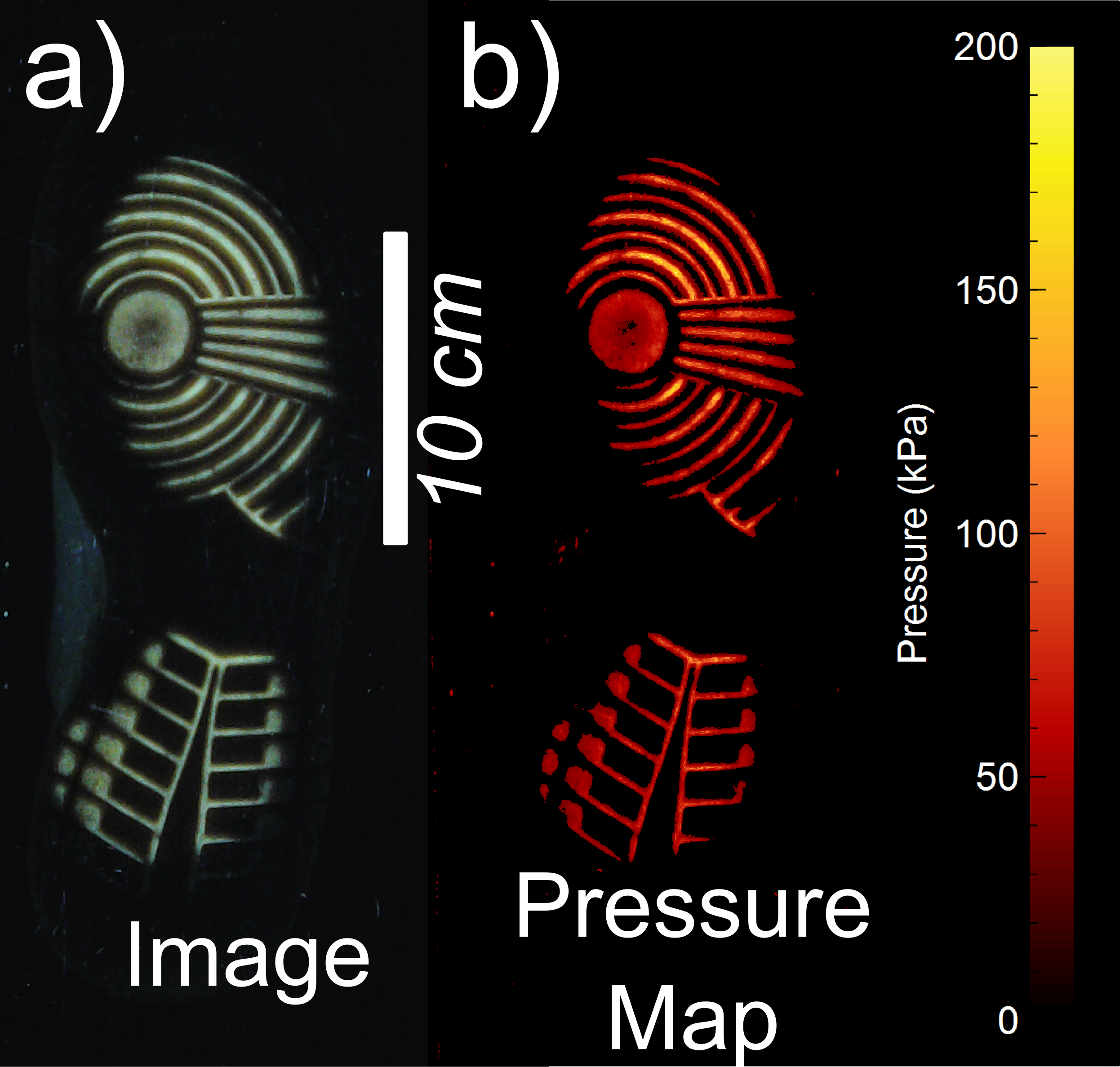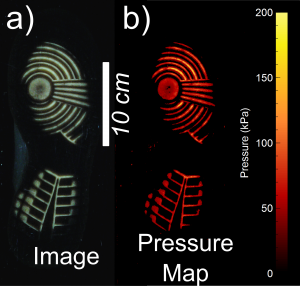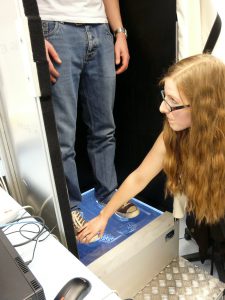
June 2, 2017, by brzjmw
Student research: discover one student’s project on the forensic analysis of footwear

Digital ‘fingerprints’ of shoe patterns.
Hands-on student research is an important part of all our degree courses. Whether you want to ponder the equations behind of string theory or learn to operate sophisticated experimental equipment, the third- and fourth-year research projects give you a chance to get in-depth experience in the area of physics that interests you most. For those who want even more, summer research placements can offer an even more intensive experience. Our students regularly win competitive placements both in Nottingham and in other institutes to develop their research skills even further.
Undergraduate student, Jemma Needham worked with Dr. James Sharp in collaboration with the Forensics Services of the East Midlands Special Operations Unit to tackle real-world problem. Police can collect fingerprints from a crime scene, but what about footprints? It turns out that some simple concepts from A-level physics — total internal reflection — can be used to build a device that combines glass plates, LED lights, and a webcam to take digital ‘fingerprints’ of shoe patterns
Jemma’s summer project was a great success. The resulting images were significantly better than traditional techniques, and the work led to a published paper in the journal Scientific Reports. After graduating with an MSci in Theoretical Physics, Jemma stayed on at Nottingham and is currently a PhD student in the Centre for the Mathematics and Theoretical Physics of Quantum Non-Equilibirum Systems.
Jemma tells us more about her student research experience in her own words:
What made you choose that particular project? Was it significant that you were working on a real-world problem?
Originally the project was advertised as some form of fingerprint retrieval techniques. I used to enjoy watching programmes like CSI so the idea of a forensic project was pretty exciting to me. It wasn’t until I began talking with James that the footprint imaging project became an option. Although finger prints are quite cool, and are the kind of thing you usually see on crime programs, the idea of imaging footwear seemed more challenging since it is a relatively young forensic technique. I was keen to work on something that could be cutting-edge research.
How did the research itself go?
I was constantly challenged (which suits me well) and it has given me a great experience in research. It was fun learning to code in Python as I went along and ended up being very useful for my fourth year project! We also spent a lot of time trying to automate the image processing method to return an image suitable for a national footwear database. This was very challenging because different pairs of shoes interacted differently on our device. Our initial protocol was not necessarily bulletproof in all cases, and we worked hard to improve this as much as we could to work automatically. In the end, what we had worked pretty well, and could quite easily be optimised with a nice little user interface allowing someone to manually adjust the image by eye.

Jemma carrying our her research.
Did the project take you outside the lab?
Throughout, we had a lot of communication with the East Midlands Special Operations Unit – in particular, their footwear forensics department. It gave me the chance to speak with people in the field and find out more about how our device could be implemented in the real world. We also had an interview with BBC Radio Nottingham to discuss the work shortly after my placement ended. At the start of the project, I never would have thought that it would have drawn this much attention and I am so grateful to have been a part of it.
What are you doing now, and did the research project have any influence on your path?
I went into the placement unsure about what I wanted to do after my degree. I was contemplating applying to do a PhD but I was uncertain about what research field I would want to pursue, and whether I would be passionate enough about it to stick at it. Doing this project helped me to realise that I enjoyed being in a research environment and it made me more confident that I would find the right project for me. I am now a PhD student, still here at the University of Nottingham, within the Centre for the Mathematics and Theoretical Physics of Quantum Non-Equilibirum Systems. I feel very strongly that this summer placement guided me in the right direction to where I am today!
No comments yet, fill out a comment to be the first

Leave a Reply